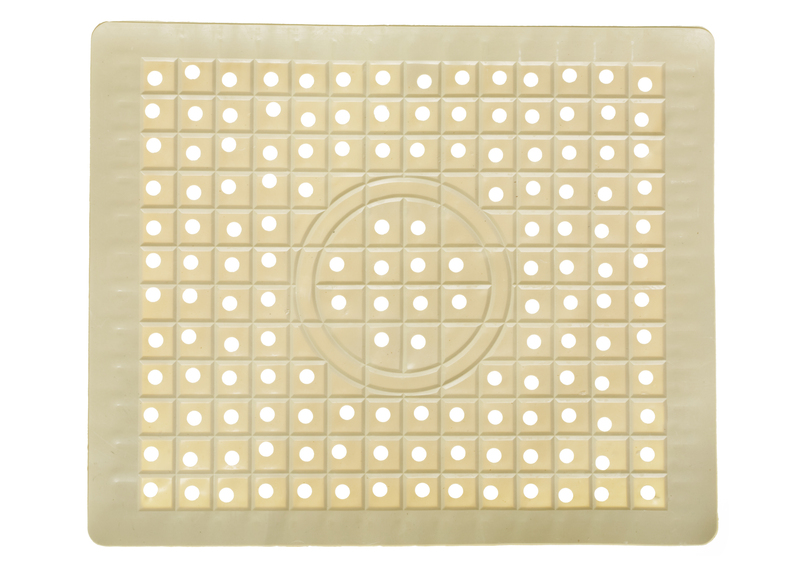Indoor Air Quality: The Core of a Healthy Home
Posted on 30/06/2025
Indoor Air Quality: The Core of a Healthy Home
Healthy living starts at home, and the air you breathe indoors plays a pivotal role in maintaining your well-being. In our modern lifestyles, we spend as much as 90% of our time inside - whether at home, work, or school. This makes indoor air quality (IAQ) not just a comfort concern but a fundamental aspect of a healthy living environment.
Understanding Indoor Air Quality: What Is It?
Indoor air quality refers to the condition of the air within and around buildings and structures. It impacts the health and comfort of occupants. Compromised IAQ can lead to a range of health problems--from minor irritations to severe respiratory issues or chronic illnesses. In most cases, symptoms disappear when people leave the building--proving that indoor air is the trigger.
Why Is Indoor Air Quality Important?
- Health risks: Poor IAQ can cause eye, nose, and throat irritation as well as headaches, dizziness, fatigue, and even long-term respiratory diseases.
- Productivity and well-being: Good air quality inside keeps your mind sharp and energy levels high.
- Allergies and asthma: Many indoor air pollutants aggravate allergies and asthma symptoms.
- Sleep: Breathing cleaner air enhances rest and recovery overnight.
Investing in better indoor air is not just an upgrade for your home--it's an investment in your health.

Key Pollutants Affecting Indoor Air Quality
Many pollutants threaten the core of a healthy home. Some are obvious, like visible mold, smoke, or pet dander, while others are silent and invisible yet equally or more dangerous. It's important to recognize what affects indoor air quality so you can take concrete actions to address problems.
Common Indoor Air Pollution Sources
- Particulate matter: Tiny particles suspended in the air, such as dust, pollen, and smoke.
- Volatile organic compounds (VOCs): Emitted by household cleaners, paints, air fresheners, and more.
- Mold and mildew: Thrive in damp, poorly-ventilated areas, releasing spores that can ruin air quality.
- Carbon monoxide: A dangerous, invisible gas produced by burning fuel in stoves, heaters, and cars.
- Radon: A naturally-occurring, radioactive gas that can enter homes through foundation cracks.
- Biological contaminants: Pet dander, dust mites, pollen, and bacteria in indoor air.
- Tobacco smoke: Contains thousands of chemicals, many of which are toxic and carcinogenic.
Understanding these sources helps target solutions specifically catered to your household and lifestyle needs.
Health Impacts of Poor Indoor Air Quality
The effects of indoor air pollution range from mild irritation to serious health issues. Factors such as age, existing health conditions, and sensitivity can make certain individuals more susceptible--like children, the elderly, and people with asthma.
Short-Term Health Effects
- Eye, nose, and throat irritation
- Headaches and dizziness
- Exacerbation of allergies and asthma
- Fatigue and decreased concentration
Long-Term Health Risks
- Respiratory diseases, especially in vulnerable groups
- Increased risk of heart disease
- Cancer, particularly from radon or prolonged tobacco smoke exposure
- Chronic lung conditions like COPD
Factors Influencing Indoor Air Quality: What Affects Your Home?
Every home is unique--and so are its challenges. Several variables can impact the quality of indoor air:
- Ventilation: Insufficient airflow traps pollutants inside.
- Humidity: Moist environments encourage mold and dust mites, while very low humidity dries out mucous membranes.
- Building materials: Some paints, finishes, and insulations release VOCs continuously.
- Heating and cooling systems: Poorly maintained HVAC units can harbor and circulate dust, mold, and bacteria.
- Occupant behaviors: Smoking indoors, burning candles, or excessive use of chemical cleaners can all worsen indoor air.
How Outdoor Air Quality Matters
Outdoor pollution, pollen, and car exhaust can easily make their way inside, especially if windows are open or the home isn't properly sealed. Ensuring your home remains a haven requires monitoring both indoor and outdoor air quality.
How to Monitor Indoor Air Quality
The first step in creating a healthier indoor living environment is knowing what's in your air. Today, various options allow homeowners to monitor air quality in real time.
- Air quality monitors: Devices that track pollutants like particulate matter, VOCs, CO2, temperature, and humidity.
- Radon test kits: Specially designed kits check for this odorless, colorless gas.
- Professional inspection: Licensed professionals can assess your home's air for mold, allergens, and ventilation issues.
Regularly check your home's air--especially after renovations, when moving in, or if someone at home develops mysterious symptoms. Knowledge is power in improving indoor air quality.
Top Strategies for Improving Indoor Air Quality
Improving the core of a healthy home doesn't always mean expensive renovations. Consistent simple habits can make a world of difference.
1. Enhance Ventilation
Keep fresh air circulating by opening windows and using exhaust fans in kitchens and bathrooms. For homes in highly polluted areas, use filtered ventilation systems.
2. Control Sources of Pollution
- Store chemicals safely: Keep paints, glues, and cleaning products tightly sealed and outside living spaces where possible.
- Minimize indoor smoking: Make your home 100% smoke-free to prevent exposure to toxic particles.
- Limit incense and candles: Burn them sparingly, and always ventilate afterwards.
- Choose low-VOC products: Opt for paints, finishes, and furniture designed to release fewer harmful chemicals.
3. Maintain a Consistent Cleaning Routine
- Dust and vacuum weekly using HEPA filters
- Wash bedding and curtains regularly to eliminate dust mites and pet dander
- Keep pets groomed and bathe them often to reduce shedding
- Address water leaks or spills quickly to prevent mold growth
4. Use Air Purifiers and Filters
A quality air purifier fitted with a HEPA filter can remove up to 99.97% of airborne particles. Consider placing purifiers in bedrooms, living areas, and places where you spend most of your time.
For homes with forced-air heating or cooling, upgrade to high-efficiency air filters and replace them regularly.
5. Control Humidity Levels
- Keep indoor humidity between 30% and 50%: Too much moisture breeds mold and dust mites; too little leads to dry skin and throat irritation.
- Use humidifiers in winter and dehumidifiers or air conditioners in summer as needed.
6. Test for Radon
Radon is one of the leading causes of lung cancer among nonsmokers. Test your basement and lowest living areas with a radon kit, and take steps to mitigate if needed.
7. Address Mold and Mildew Immediately
- Use exhaust fans when showering or cooking
- Fix leaks in roofs, pipes, or windows promptly
- Replace water-damaged materials and thoroughly scrub and dry all surfaces
8. Select Healthy Houseplants (With Caution)
Some plants can help filter air pollutants. However, overwatering and poor drainage can lead to mold; so choose plants carefully and keep soil dry to avoid unintentional problems.
Design and Remodeling Tips for Better Indoor Air
Building or renovating? Smart material choices and designs can make a permanent difference in the indoor air quality of your home.
- Opt for solid wood or metal furniture over composite woods, which often emit formaldehyde
- Install energy recovery ventilators (ERVs) for continuous controlled ventilation
- Choose tile, wood, or natural linoleum flooring instead of wall-to-wall carpeting
- Specify zero-VOC or low-VOC paints and adhesives
- Design for ample daylight and airflow to reduce moisture and bacteria buildup
Special Considerations: Children, Seniors, and Vulnerable Groups
Children, the elderly, and those with chronic illnesses are particularly sensitive to indoor air pollutants. Their immune systems may be weaker, and they breathe more air per pound of body weight than healthy adults, increasing their risk.
- Keep bedrooms especially clean and well-ventilated as people spend 1/3 of their lives sleeping
- Avoid air fresheners and scented candles in kids' or seniors' rooms
- Promptly address any signs of allergy or asthma flare-ups, which may be linked to IAQ

Frequently Asked Questions About Indoor Air Quality
How do I know if my home's air is unhealthy?
Common signs include recurring headaches, fatigue, allergy symptoms, moldy odors, or visible dust build-up despite regular cleaning. For peace of mind, invest in an indoor air quality monitor.
Can houseplants really improve air quality?
While certain houseplants can absorb some pollutants, their impact is limited compared to mechanical filtration. Don't rely on plants alone, especially if you have allergies or are sensitive to mold.
Should I be concerned about indoor air even in new homes?
Absolutely. New construction materials and finishes often release VOCs for months after installation. Adequate ventilation is crucial during and after remodeling projects.
How often should I change my air filters?
Change HVAC filters every 1-3 months, but more often if you have pets, allergies, or live in a high-dust region. Check the manufacturer's guidance and monitor how quickly your filters get dirty.
Conclusion: Make Indoor Air Quality the Heart of Your Healthy Home
Clean indoor air is the cornerstone of a healthy home. By understanding, monitoring, and making conscious changes, you can build a safer environment for yourself and your loved ones. Remember, the benefits of improved indoor air quality span from better health to higher energy and greater peace of mind--making it a truly worthy investment in your home and well-being.
Stay proactive--assess, clean, ventilate, and innovate--to keep the core of your home healthy for years to come.





